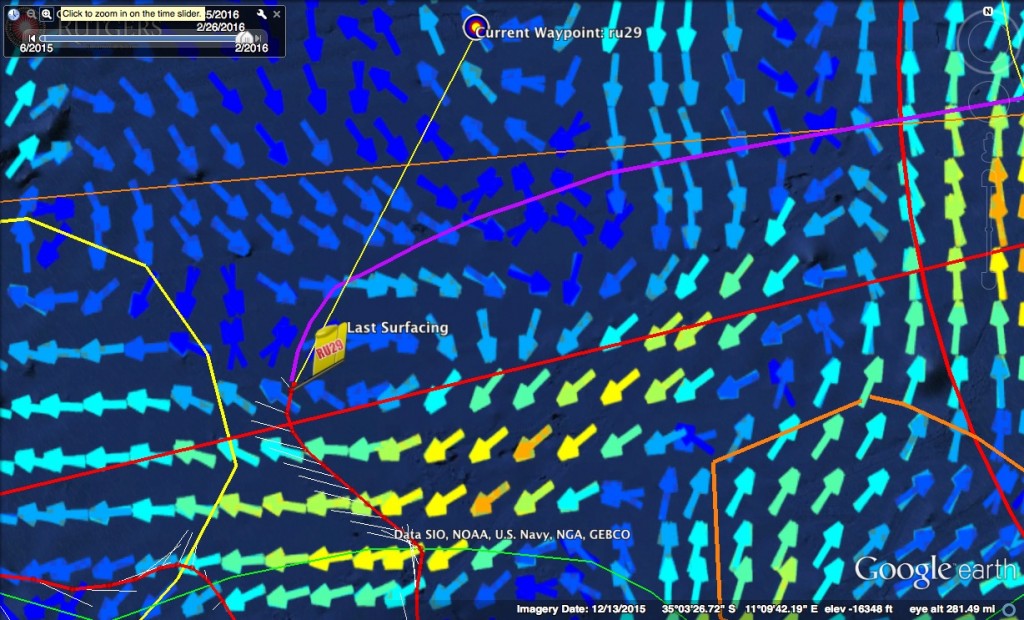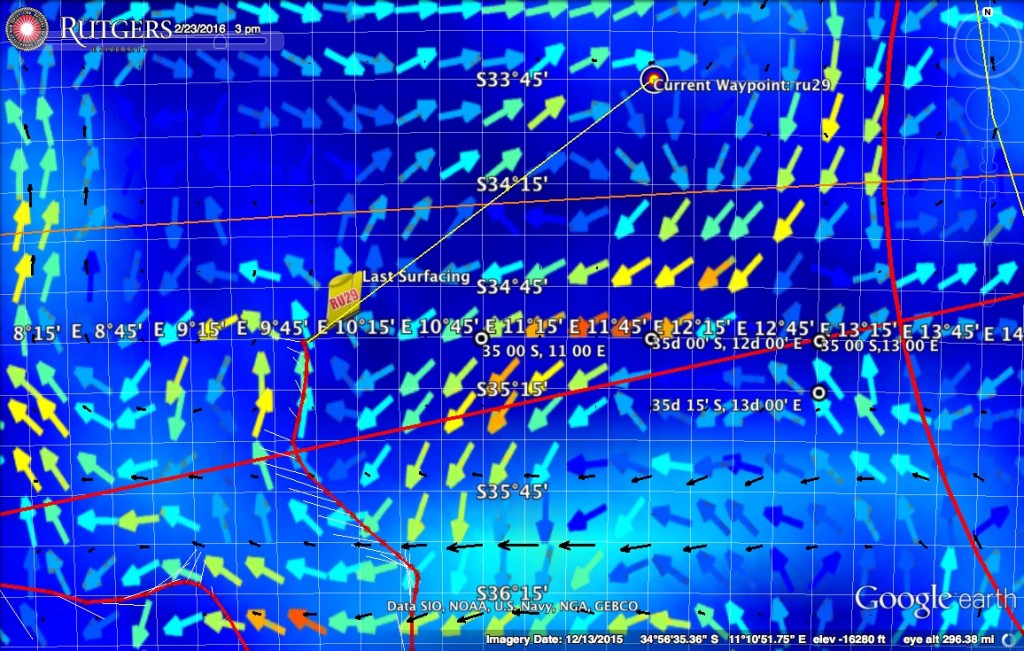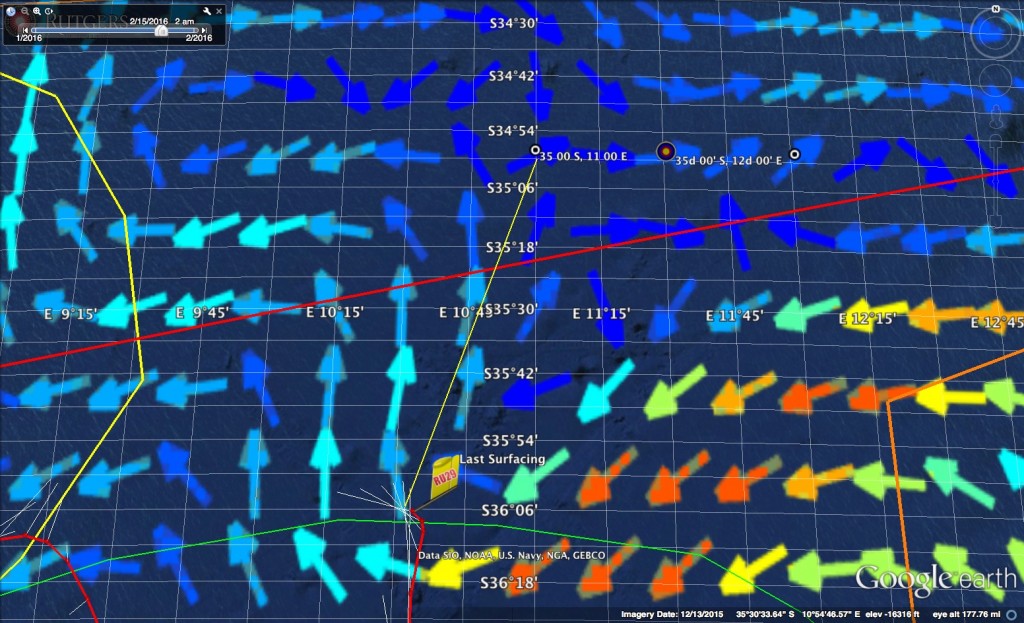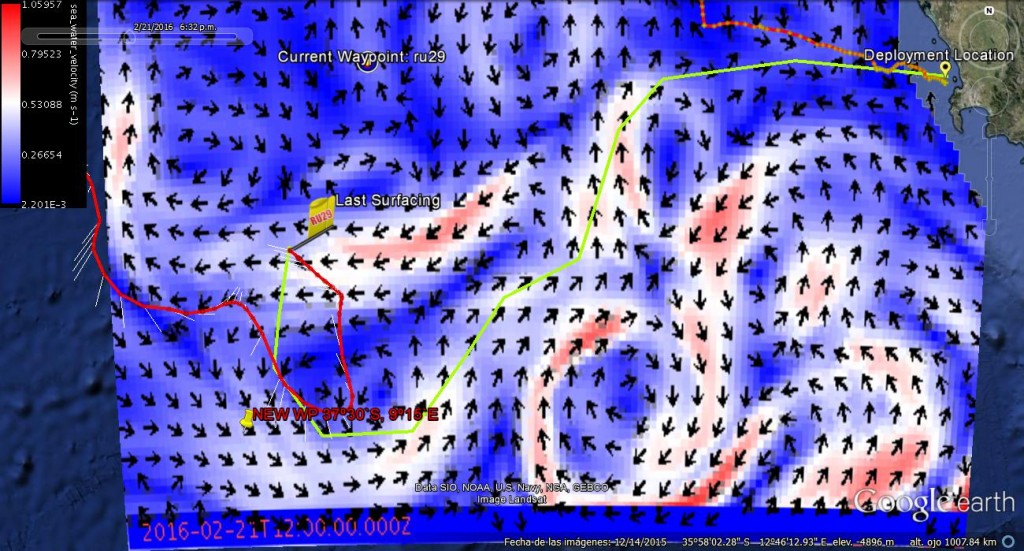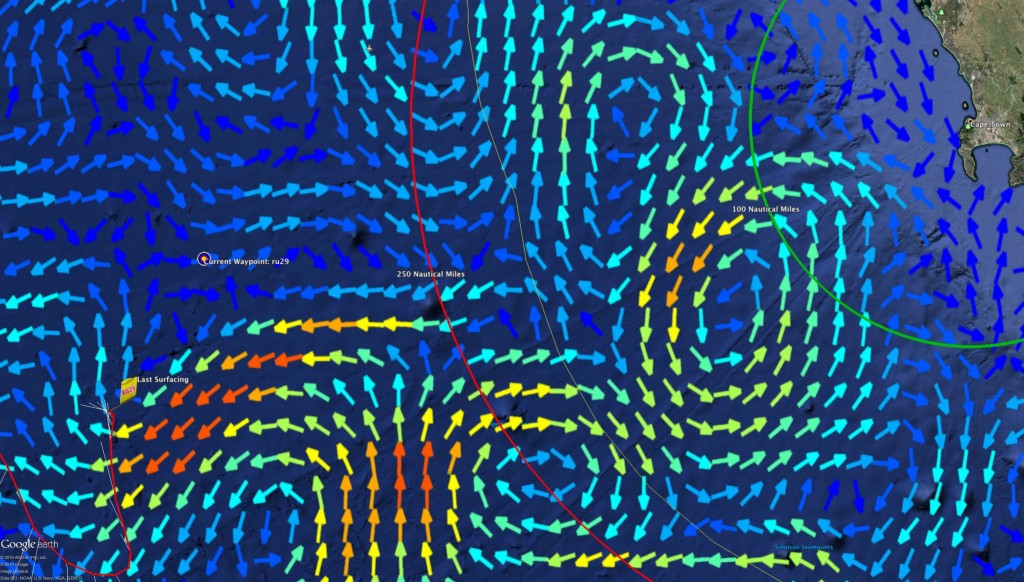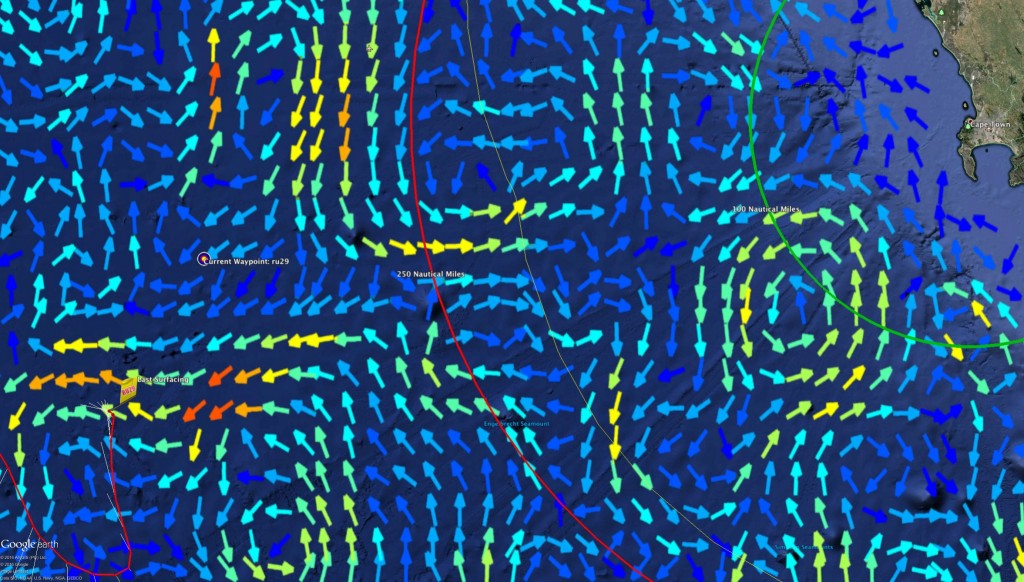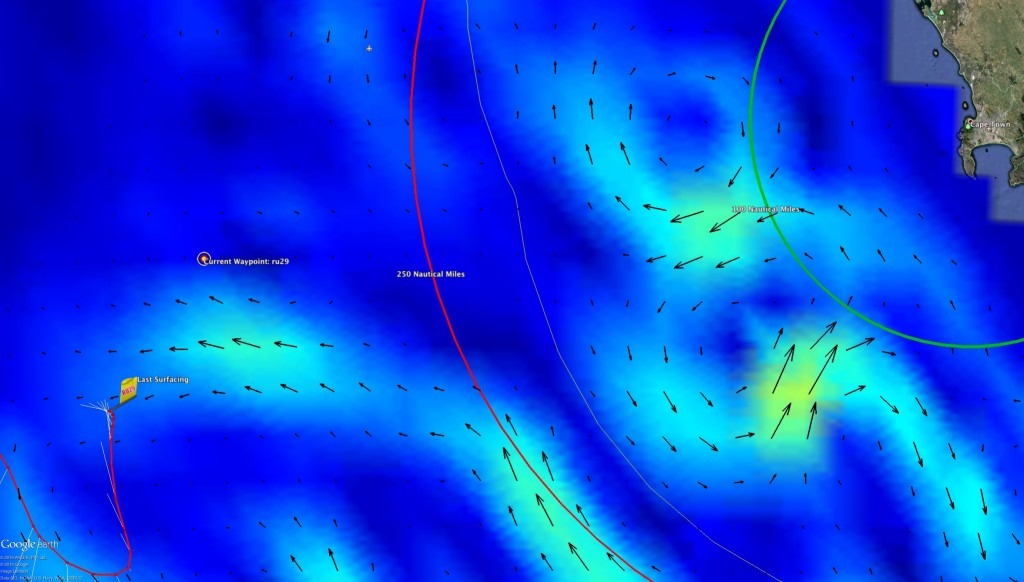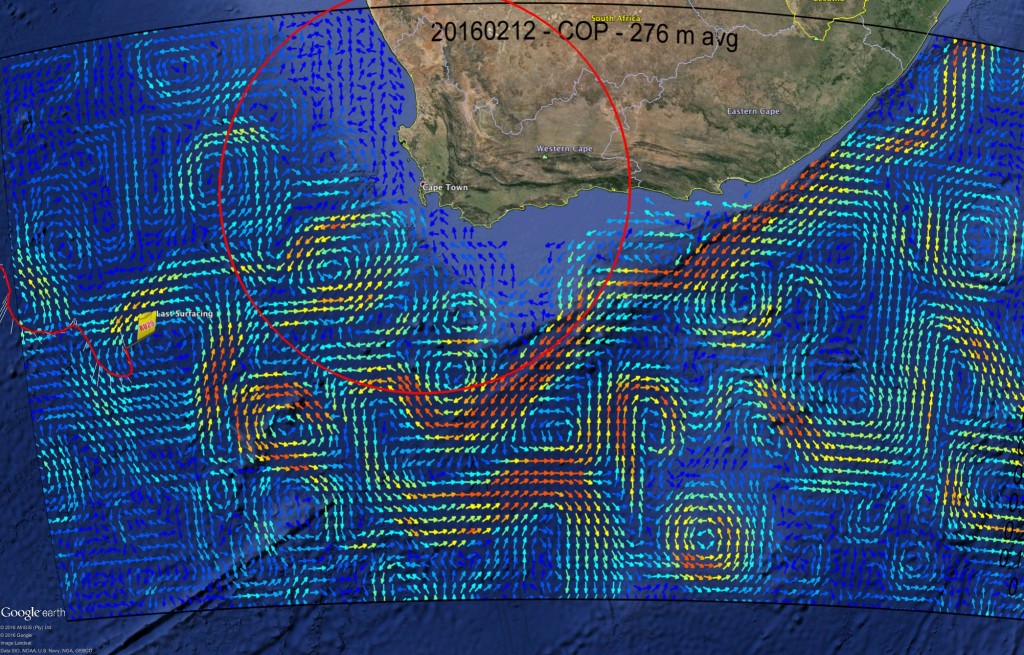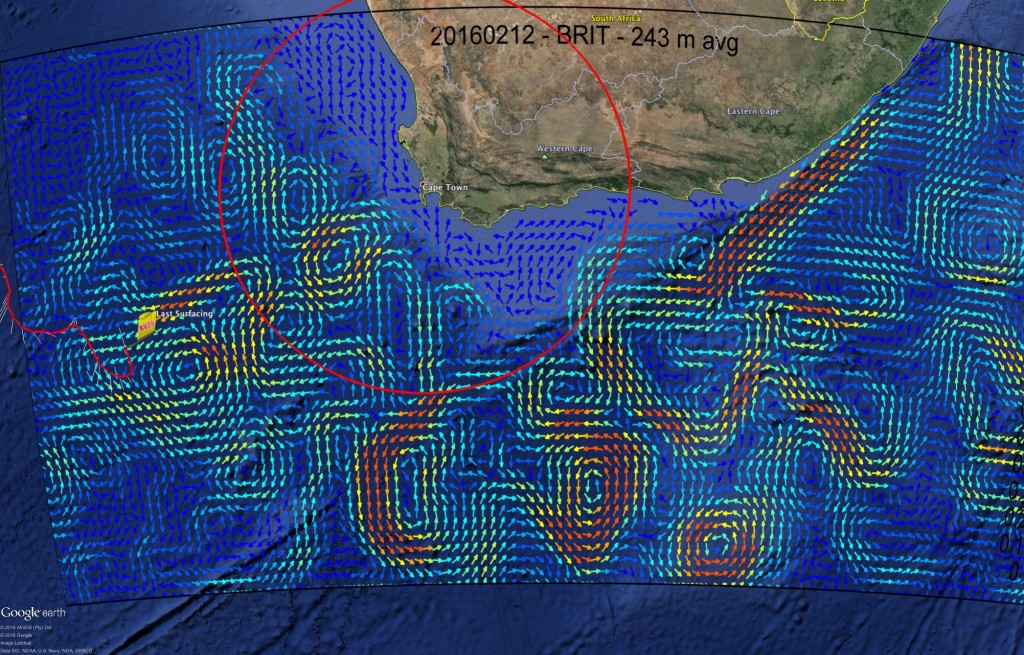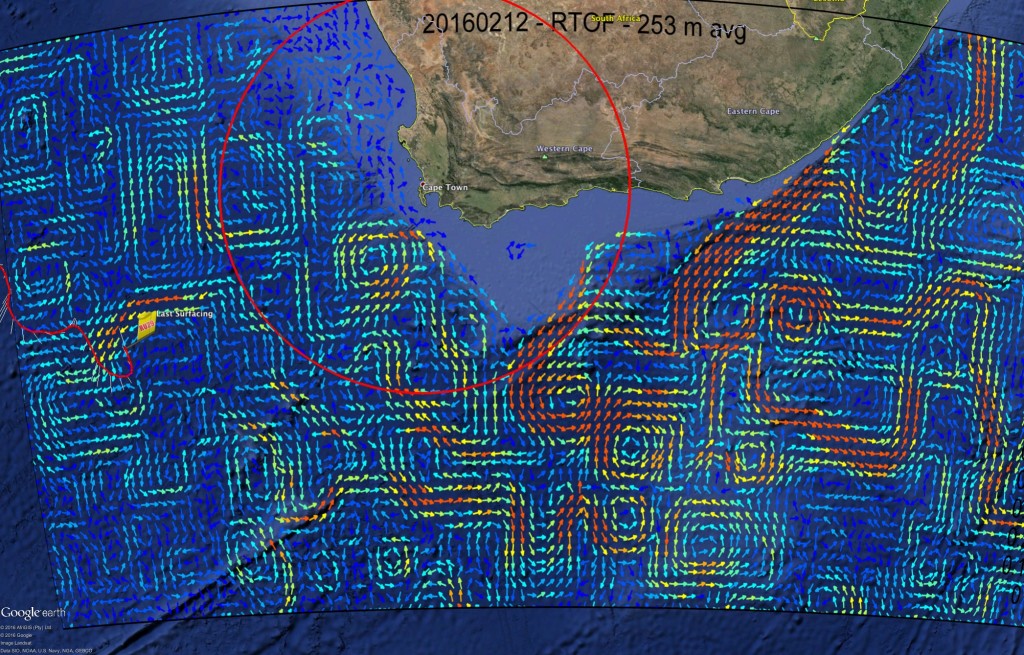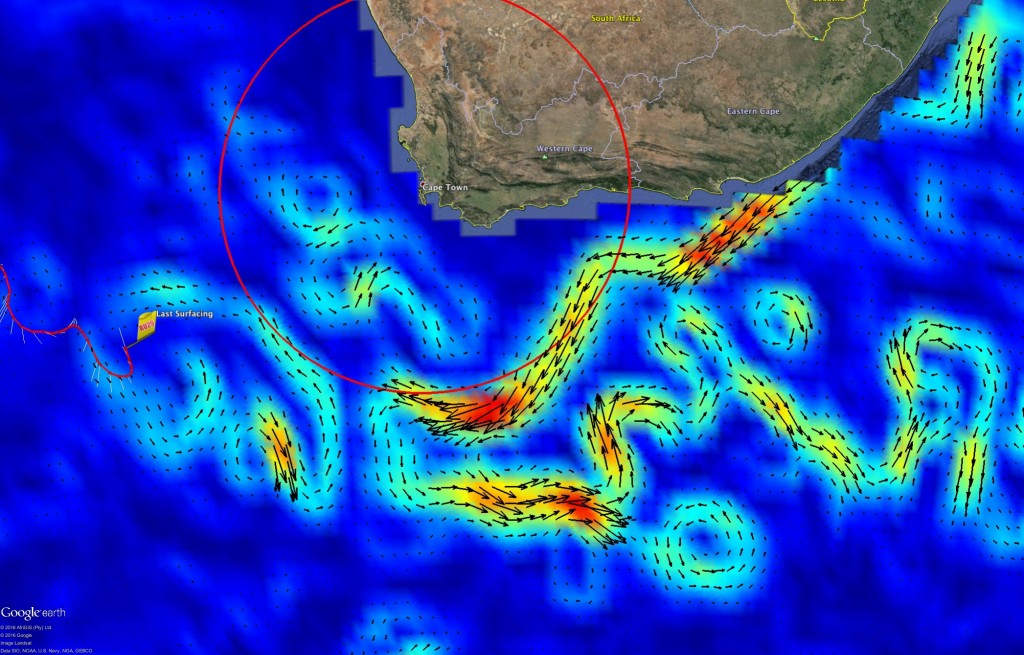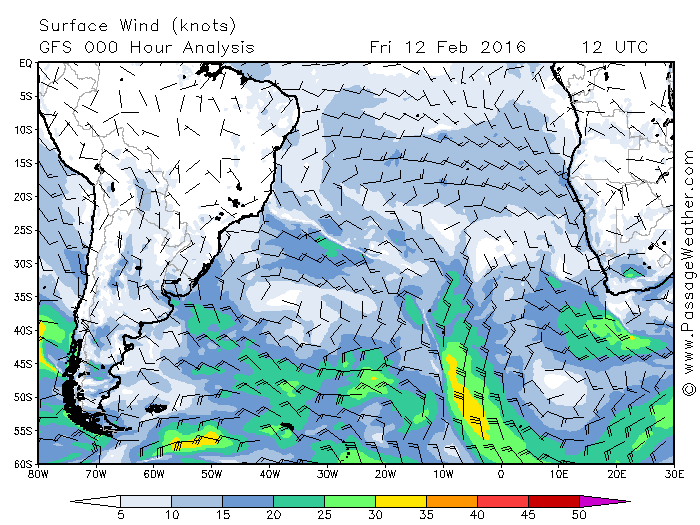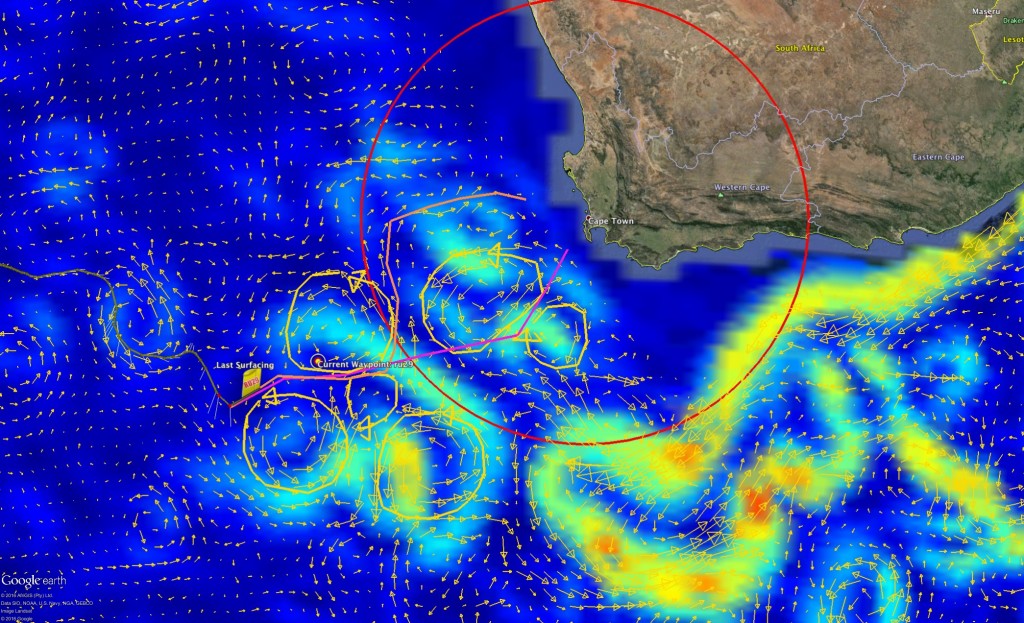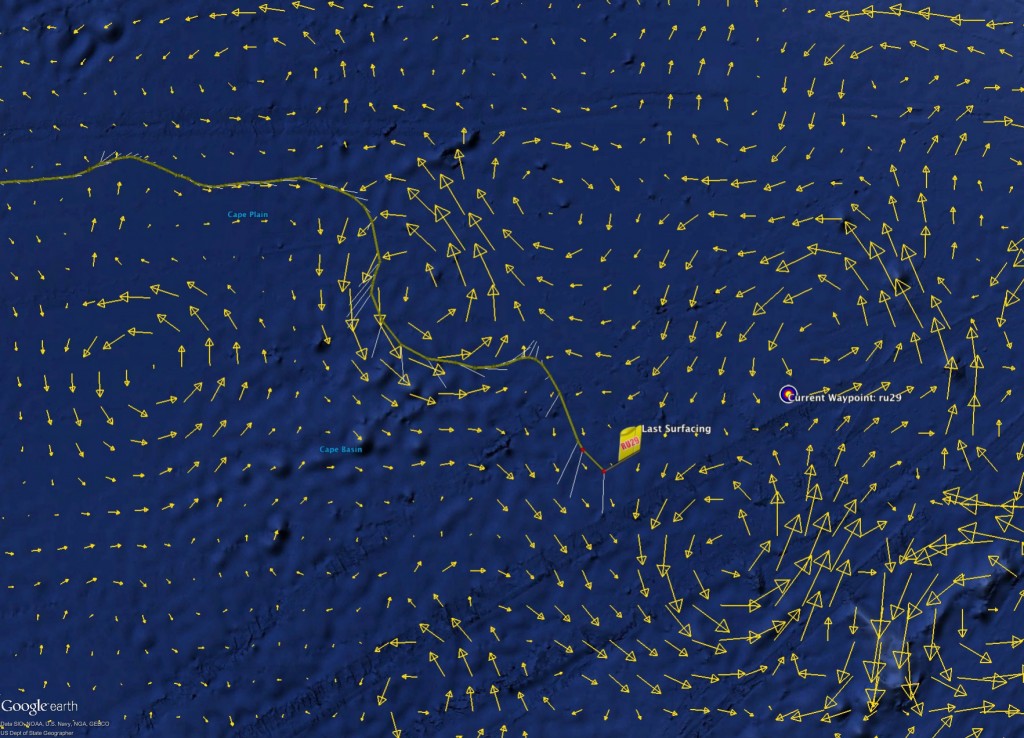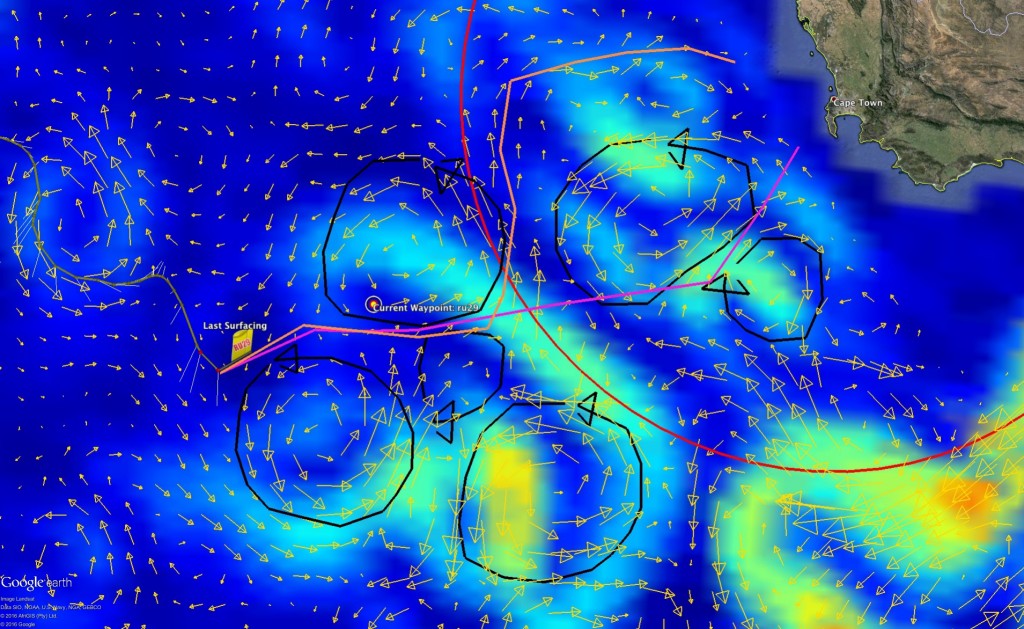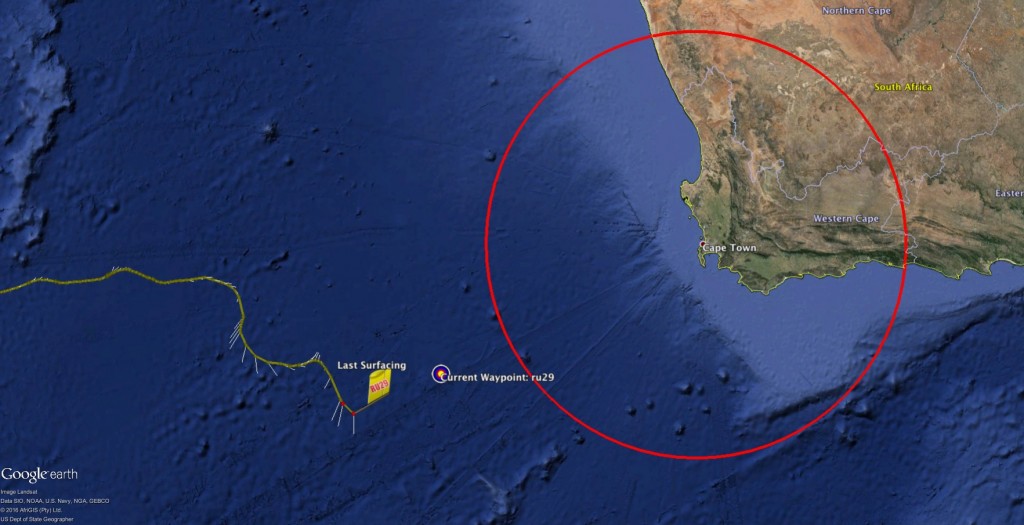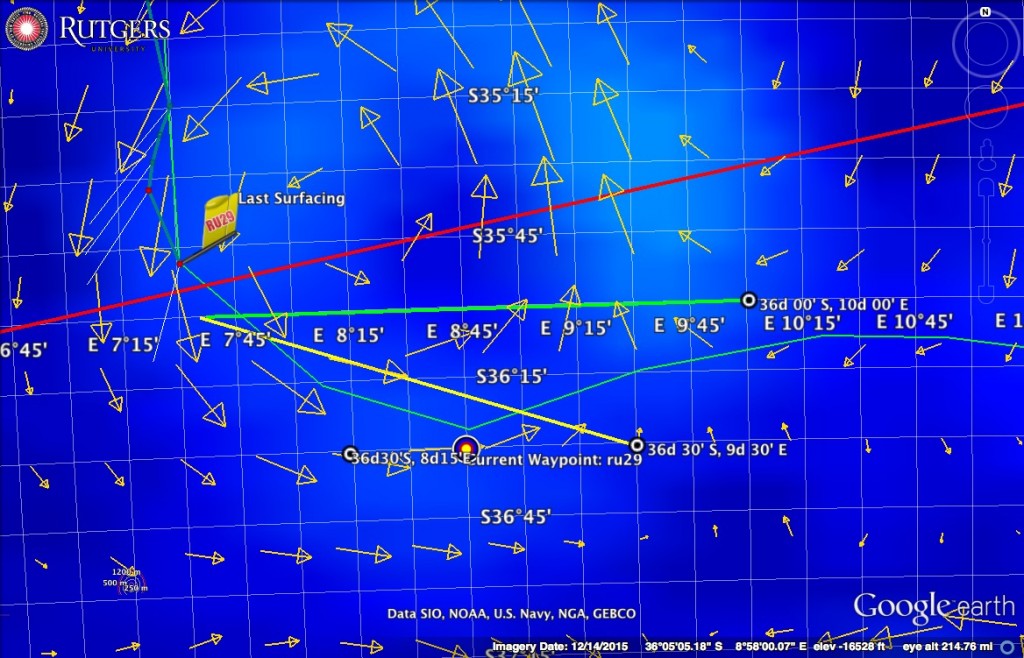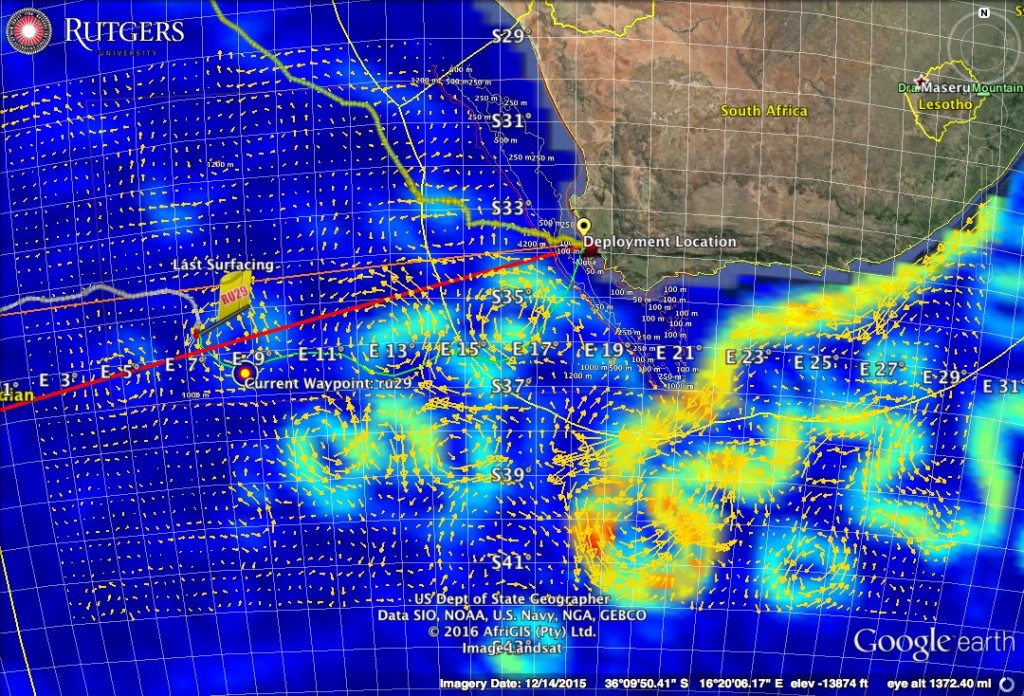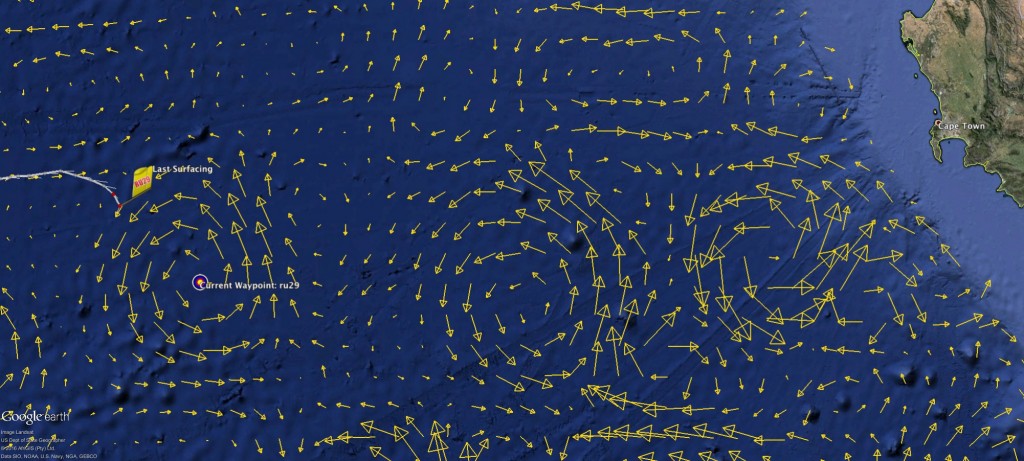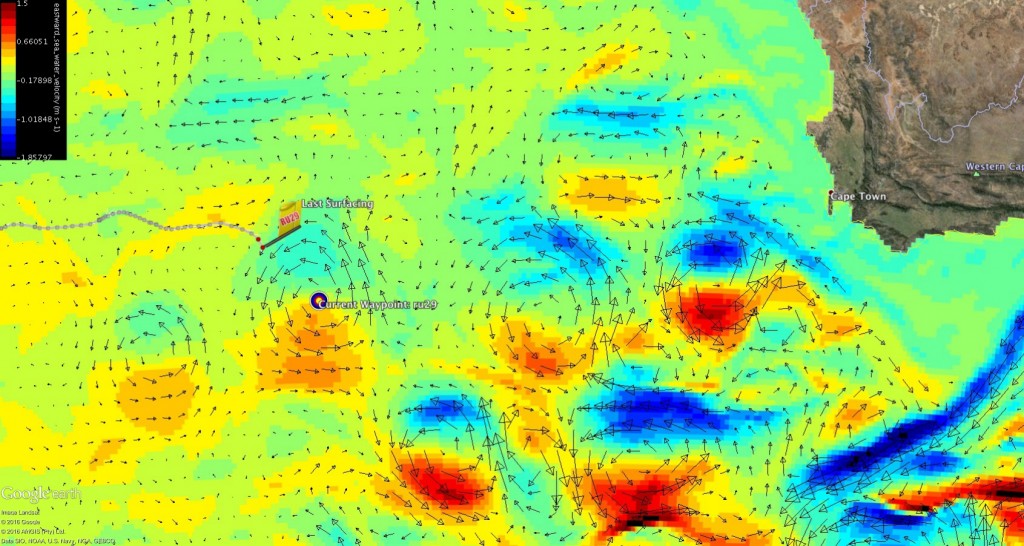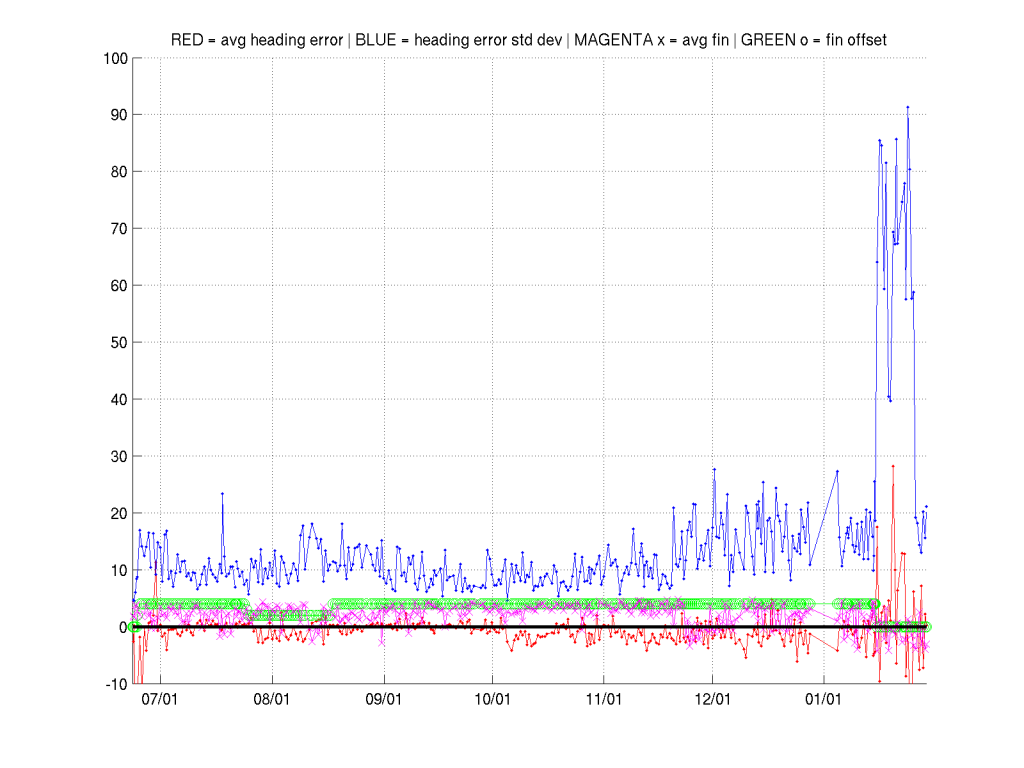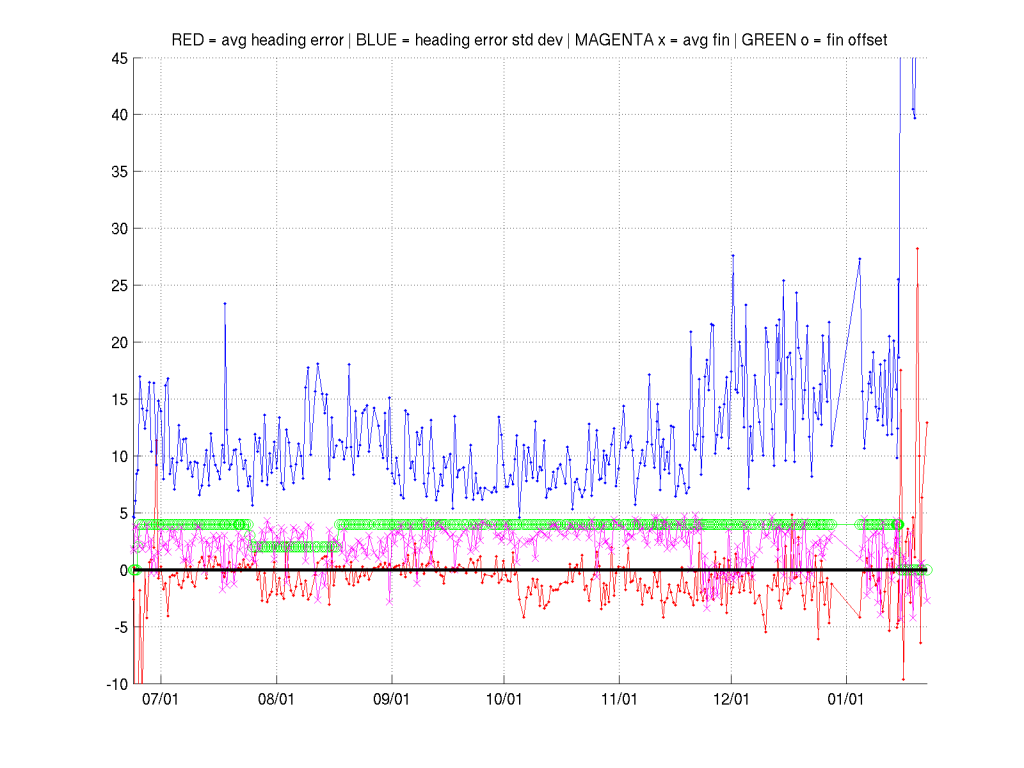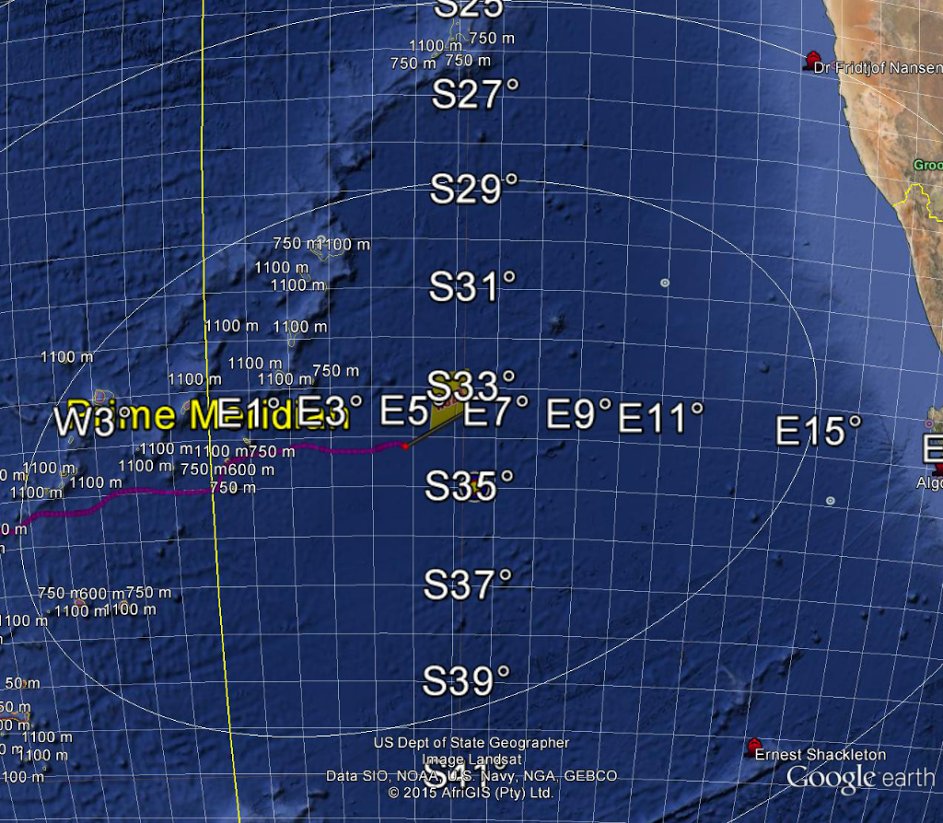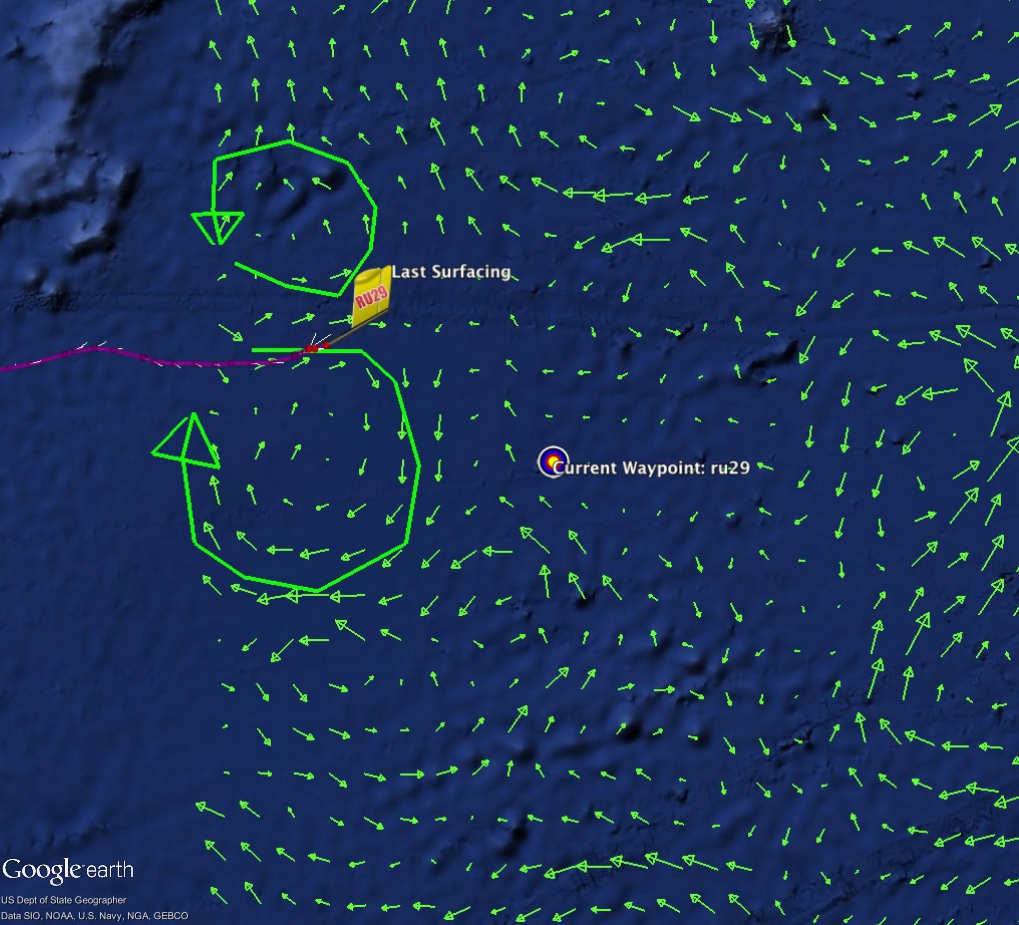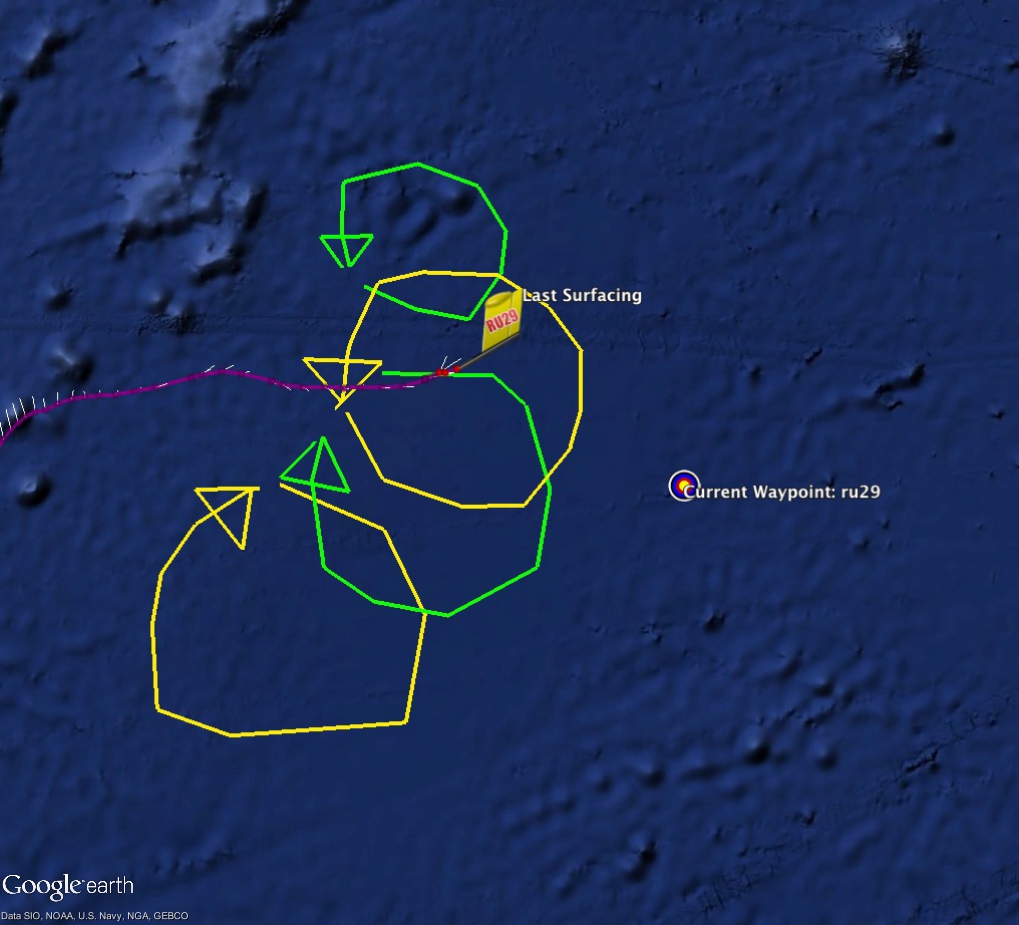On Friday, we left off with Challenger struggling to make progress across a powerful jet that continued to push westward. However, as we made our way into the weekend, the currents slowly but surely started rotating to a more favorable direction from nearly due west to having more of a northern component. This was very nicely shown in the copernicus forecast where challengers reported currents while entering the domain of the cold core eddy matched that of the model.
By sunday afternoon, Challenger began showing the currents rotate back west, again slowing the gliders progress and pushing her back to the west.
As we start off this next week, we will move the way point to the NE 50% north 50% east of the glider speed. This we hope will give us the best shot of making it safely between the eddy to our east and west as seen in the RTOFS map below, so we can hopefully safely maneuver towards Cape Town.
The batteries are still holding well, giving us an estimated 100 days remaining which will hold us over until the end of May. As of now, we have two potential recovery windows at March 29th – April 1 and April 18 – 30.
Force Wind Sea & Honor
